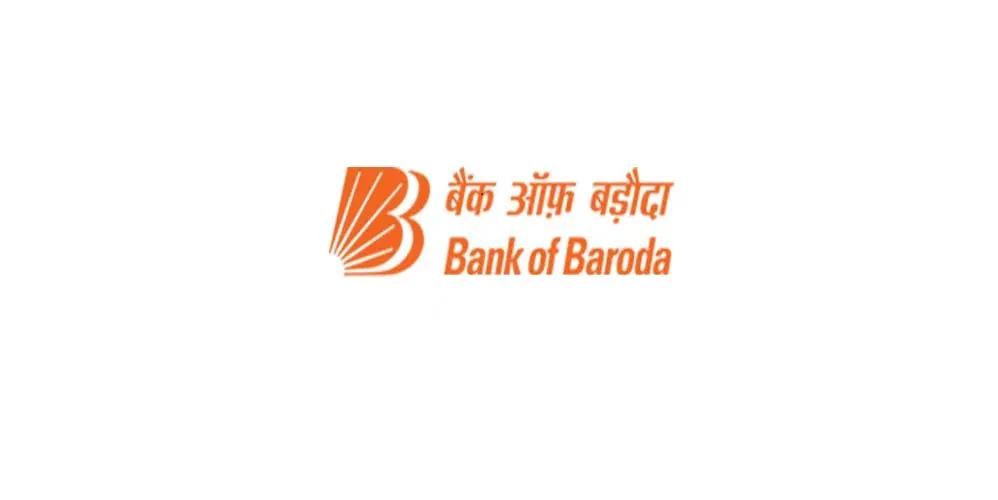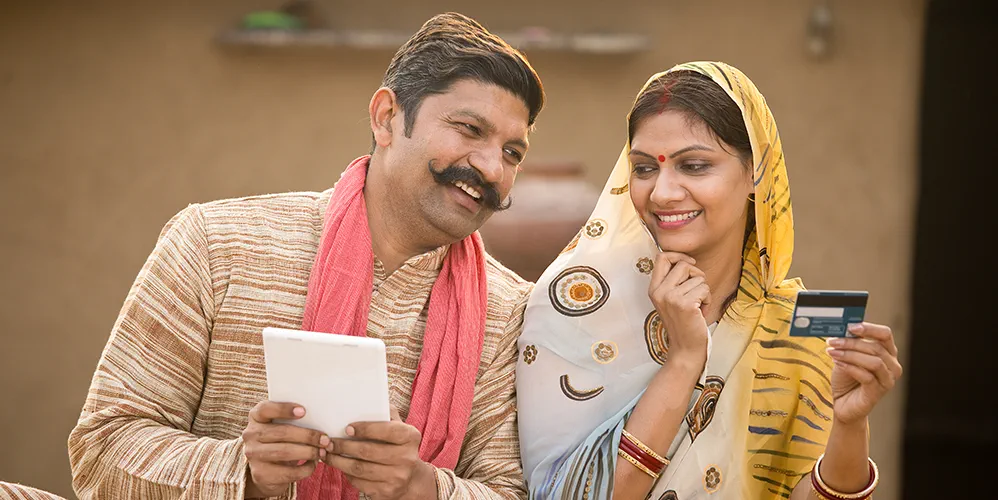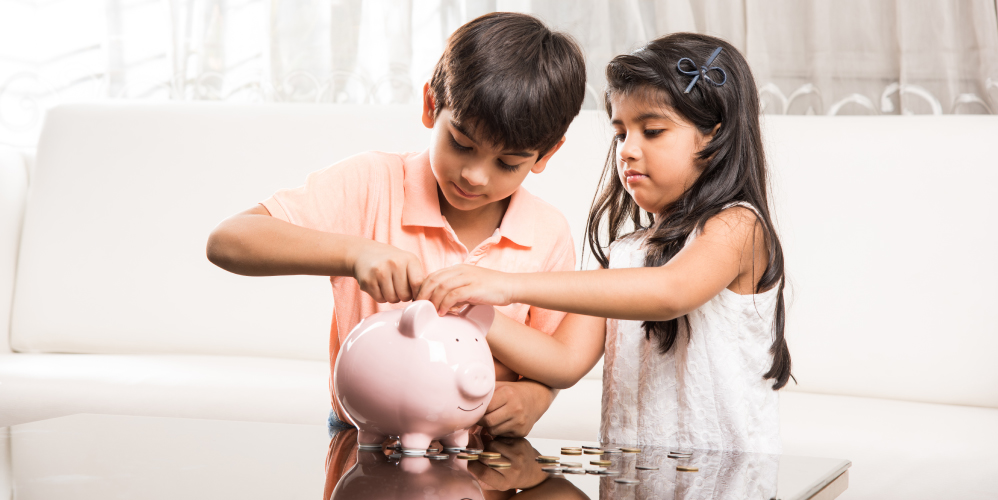
Get latest financial information, tips, insights & more

Importance of NRI Banking for Indians Living Abroad
For Non-Resident Indians (NRIs), managing finances while living abroad can be challenging. NRI banking solutions are designed to simplify financial management for global Indians, providing a wide range of services to cater to their unique needs. Let's explore the benefits of NRI banking, how NRIs can manage finances globally, and special products offered by Bank of Baroda.

What Is Joint Account? - Meaning, Benefits, Application Process & How its Work
When it comes to managing one’s finances, having a bank account plays a crucial role. In the same way, a joint account is, as the name suggests, a financial arrangement that requires more than one person to open it. This account can work wonders, as it allows all the account holders to withdraw cash, write cheques, and make online payments. Let’s delve deeper into the blog and understand the technicalities of opening a joint account.

Calculating Interest on Savings Account: Factors, Tips & Formula
Saving money is a prudent financial habit that not only ensures a secure future but also opens doors to financial growth. One of the perks of having a savings account is the interest it accrues over time. Understanding how to calculate interest on your savings account can empower you to make informed financial decisions and maximize your earnings. In this guide, we will demystify the process of calculating interest on a savings account, shedding light on the key factors and considerations.

Types of Salary Accounts: Know Your Options for Managing Your Income
Almost everyone who works as a salaried employee has a salary account created for them. If you are wondering what a salary account is, the answer is simple. It is a savings bank account created by a company or an employer to conveniently pay off salaries to its employees. A salary account helps simplify the process of crediting salaries for the employer, while offering a plethora of benefits to its employees, such as seamless mobile banking and online services. Let us take a look at the benefits of having a salary account.

Benefits of Having a Separate Salary Account and Savings Account
Separating your salary and savings accounts is like drawing a clear line between your finances. It might seem like a small detail, but it can make a world of difference in your ability to manage your money effectively and achieve your financial goals. It helps prevent mindless spending while motivating you to save at regular intervals, thus making it easier to achieve your financial goals. Through this blog, let us understand why it is important to have a separate savings and salary account.

How does Bank of Baroda stand out as the top choice for Salary Accounts?
Bank of Baroda Salary account is an account that goes beyond saving. It empowers the employee with attractive benefits. Bank of Baroda stands out as a compelling choice for the opening of Salary Accounts. Tailored to customers' needs, Bank of Baroda offers various types of Salary Accounts.

Understanding Dormant Bank Accounts: Risks and Solutions
We all have that one drawer in our homes where we stow away things we rarely use. It might be old gadgets, dusty books, or random knick-knacks. Similarly, in the realm of personal finances, many of us have a drawer equivalent in the form of our unused bank accounts. When it comes to managing our finances, many of us have a similar tendency to forget about our inoperative accounts. We might open one with all the intention of saving money, but then life gets busy, and the account stays unused for months. Your bank savings account is inactive, much like those items tucked away in that drawer. In the world of banking, this is a big no-no. In this blog, we'll explore what a dormant account is and why you should avoid leaving your bank account dormant.

Step-By-Step Guide To Opening An NRI Account
As an NRI, having an NRI bank account in India is important for managing your finances. NRI Bank account opening is easy, but without proper information, it may seem like a challenge.

Complete Guide on NRI Banking
NRI's full form is Non-Residential Indian. NRI Banking is a pivotal financial service catering to the unique rеquirеmеnts of Indian citizens residing overseas. It is a spеcialisеd banking service that facilitates еfficiеnt management of NRI finances and NRI investments in India. NRI Banking also ensures seamless transfer of funds to the NRI's account in host countries when necessary.

Documents Required for an NRI Account Opening
If you are considering opening an NRI account, a common concern that comes to mind is: What documents are required for an NRI account?

Effective Financial Management For NRIs: Tips And Strategies
Living abroad as a Non-Resident Indian (NRI) can be an exciting and rewarding experience. However, one of the significant challenges faced by NRIs is managing their finances from afar. Balancing income, expenses, investments, and taxation can be a complex task, but with the right approach, it can be navigated successfully. In this blog, we will explore the various aspects of managing finances as an NRI, including setting financial goals, diversification and risk management, monitoring and adjusting financial plans, and understanding taxation. By the end, you'll have a clearer picture of which NRI account suits your financial needs.

What are the Benefits of an NRI Account?
Non-Resident Indian (NRI) accounts offer several benefits to individuals who are living abroad and wish to manage their finances in India. These accounts are provided by Indian banks and come in different types, such as NRE (Non-Residential External), NRO (Non-Residential Ordinary), and FCNR – B (Foreign Currency Non-Resident- Bank) accounts. The specific benefits of having an NRI account can vary depending on the type of nri account and the bank you choose, but here are some common advantages:

Managing Your NRI Account: Tips for Financial Success
Managing your finances as an NRI can be challenging due to the frequent travel and changing circumstances. Non-resident Indians often encounter rule changes distinct from those applicable to resident Indians, which can sometimes be complex to grasp.

Different Types of NRI Banking Services
Non-resident Indians (NRIs) play a vital role in India's economic landscape. While they may not be residents of India, there are multiple ways in which they contribute to the overall economy. This can be through business means, investments in India, or earnings from India while staying abroad. They cater to their unique financial needs, and thus, Indian banks offer a comprehensive suite of NRI banking services. Before diving into the different types of NRI accounts, let’s understand what NRI banking services encompass.

Complete Guide on Banking Services for Women
From Gen X to Gen Z, a conscious mindset change is palpable amongst women earners who have not only earned but also invested. These women acted as financial agents, preparing society towards change with confidence and competence. However, in the words of *Linda Davis Taylor, CEO, and chairman of Clifford Swan Investment Counsellors, "Wealth without knowledge is wealth wasted." Though many women have earned money, personal finance for women has been largely driven by their fathers or spouses who have taken care of their banking and investments both amongst the literate and illiterate earners.

What is Women's Savings Account?
Financial independence is a necessary component of modern society. With more women becoming self-sufficient and self-employed, the need for financial security and stability is more important than ever. Women have unique financial needs, which the traditional banking system has not always met. To meet these needs, women’s savings account have emerged as a practical and tailored solution. In this blog, we will discuss women's savings accounts and their benefits.

5 Common Mistakes to Avoid While Investing in Fixed Deposits
When investing, a fixed deposit investment features essentially in almost everyone's investment portfolio. This low-risk, stable saving lets you enjoy steady capital gains at the end of maturity. However, even fixed deposit investment demands careful planning. We will enumerate 5 common mistakes that people tend to make while opting for fixed deposit accounts.

Successful 7 Years of Pradhan Mantri Jan Dhan Yojana
Let us talk about Pradhan Mantri Jan Dhan Yojana (PMJDY) in detail. It is a nationwide scheme launched in 2014. The programme makes financial services accessible to all eligible individuals in the country.

Pradhan Mantri Jan Dhan Yojana - Everything You Need to Know
The Pradhan Mantri Jan Dhan Yojana account is a financial umbrella provided by the Government of India to make economically backwards Indian citizens fall within a structured financial institution. The program endeavours to reach out to every adult to open accounts with affordable banking for all. Low-income unorganised sectors, with daily wagers, cannot opt for private banking facilities owing to eligibility criteria that impede them from maintaining those accounts. But the PMJDY allows all banking privileges to Indian citizens in zero balance accounts allowing them to save as they earn without depending on private and insecure saving cooperatives.

How To Open A Savings Account
A savings account is perhaps the first interaction a person has with a bank. It is the most basic of bank accounts. It offers the safety that a depositor looks for, plus interest rates and the flexibility of withdrawing money anytime and anywhere.

Documents Required for Savings Bank Account
A leading bank like Bank of Baroda offers a bouquet of savings accounts that you can pick from to park your salary and income from other sources with, while earning some interest based on the type of bank account you choose to open.

Features & Benefits of Savings Account
A savings account is the most basic bank account available. It is an account that allows you to pool in your finances and manage them. The funds are available to be withdrawn at any time. With the different needs and requirements of the customers, banks have begun offering different types of savings accounts to meet these different needs.

Difference Between Current Account and Savings Account
A savings account is an interest-bearing deposit account held at a bank or other financial institution. Though these accounts typically pay a modest interest rate, their safety and reliability make them a great option for parking cash you want available for short-term needs.

A Complete Guide to Savings Account
Most Indians are familiar with bank accounts, and most of you will have a saving account. Let’s look at saving account meaning, how you can open one and make the best of it in this complete guide to savings account.

What is Zero Balance Account
The growth of the Mutual Funds in India has created its edge in the personal finance industry in India and has opened up opportunities for investors to diversify their investments across various asset classes. Mutual fund is a type of financial intermediary product that empowers millions of small as well as large investors across the country to participate and invest in capital market and derive benefits from the same.

Different Types of Savings Account
Savings give financial security and relieve stress. They are fundamental for a secure financial future. It is the fund that bails you out through rough times like the Pandemic. If it hadn't been for those wisely guarded pennies, people who went through layoffs or salary reductions could not have survived. Without their savings to fall back on, things would have been difficult. Saving account interest rates may have dropped but they still add 2.75 -3.35 % (subject to change) per year to your deposit. So, while we realise it is healthy to save, you should know the types of savings account that will best serve your purpose and be beneficial for your small, medium or large saving behaviour. Here’s a quick checklist that will help you to make a more informed decision.

Liquid Funds Vs Fixed Deposits
The growth of the Mutual Funds in India has created its edge in the personal finance industry in India and has opened up opportunities for investors to diversify their investments across various asset classes. Mutual fund is a type of financial intermediary product that empowers millions of small as well as large investors across the country to participate and invest in capital market and derive benefits from the same.

Complete Guide to Business Current Account
When you start a business, you have to set up several things. You might need to rent an office space, a shop, or set up your factory. You also need to open a bank account to manage your business transactions. However, a basic savings account may not suffice. You need an account that enables unlimited transactions, i.e., a Current Account. This article explains what a Current Account is, why it is essential for your business and the many advantages of Current Accounts.

Saving vs. Investing: Which is Better for Generating Wealth
Comparing savings and investments is like comparing apples and oranges. While they are both fruitful to your financial wellbeing, they are both very different concepts. Despite this, the two terms are often used interchangeably.

Salary And Pension Solutions for Indian Military Personnel - A Complete Guide
From safeguarding our nation from external threat to maintaining peace and security within the country, India’s Armed Forces protect all of us as citizens. For all the bravery and courage that they display on a daily basis, they truly deserve the best in return. To help military personnel maintain their finances, Bank of Baroda offers salary and pension solutions for Indian military personnel.

What are the Features & Benefits of the Baroda Advantage Current Account?
Are you looking for a way to manage your daily high-value business transactions? Do you want access to extra cash to fund unforeseen financial crises? If yes, then you can opt for a Current Account. Unlike a Savings Account, these accounts come with high-value, unlimited transactions, and you can access them as often as you like, to manage your business needs. Plus, you can enjoy the overdraft facility that lets you borrow higher amounts than your balance. One of the best current accounts you can open in India is the Bank of Baroda Advantage Current Account. In this article, we assess the Bank of Baroda current account benefits and features.

Check Out These 7 Best Proven Money Saving Tips
We all have grown up listening to the importance of saving for a rainy day. However, things are easier said than done and saving a few hundred rupees by not eating at your favourite café will still probably not make a significant mark in the bank. So, what really is the best way to save money? Are there some tricks that can really make a difference and help you save enough cash for emergencies? If these are the questions running around in your mind right now, you have come to the right place. Let’s take a look at 7 saving tips that will really make the difference for you in 2022.

Savings Account Meaning & How it Works
A savings account is one of the first financial products that most people have. This account has many uses and benefits for salaried and self-employed people. In this article, we will take a look at what is a savings account in a bit more detail. We will also explain the importance of saving account and how you can open this type of account. Let’s get started!

Salary Account Vs Savings Account
A bank account is usually the first thing you need to begin your Savings journey. Indian Banks offer a wide variety of accounts wherein you can deposit money, earn interest income and build a corpus. Of these, the most common accounts are the Regular Savings Account and the Salary Account. In this article, we have compared the differences between Salary Account and Savings Account.

Baroda Salary Classic Account - Everything You Need To Know
There are many different types of bank accounts that you can open today. Salaried people can open a special salary account that can help them save while also empowering them with several benefits. One such account is offered by Bank of Baroda. Let’s understand what a salary account is and look at the Bank of Baroda Salary Classic Account benefits.

What is a Term Deposits - A Complete Guide
A bank account is the most crucial instrument that allows you to save money. You can easily deposit and withdraw funds at your convenience and grow your savings steadily. While banks offer interest on your savings account deposits, they also offer a host of investment facilities that allow you to earn better interest rates and grow your corpus significantly. One such facility is known as a term deposit. Let us understand what term deposits are and how to assess their salient features, exceptional benefits, and various types. Read on.

6 Best Ways To Earn Returns Through Your Savings Account
The very first bank account opened by most people is a Savings Account. Now, do you know that your savings account can help you earn interest on the money that you deposit in it? The rate of interest that you earn on your savings differs from one bank to the other. There are also several other ways to earn savings account returns. However, not many people are able to utilize the maximum potential of a savings account as they do not possess the right information. To help you make the most out of your savings account, here are 6 Savings Account tips:

Baroda Basic Savings Account
Basic Savings Account
If you want to open a bank account where you are not required to maintain a minimum balance every month, you can open a basic savings account. Introduced to encourage more financial inclusion, in other words, have more people become part of the banking system, a basic savings account offers basic features like deposit and withdrawal, a debit card and internet banking facility. But there is no minimum balance requirement. There are some other features of a basic savings account that vary slightly from bank to bank.
Benefits of a basic savings account
No charges for not maintaining minimum balance
The major benefit of a basic savings account is that unlike other savings accounts, you will not be fined for not maintaining minimum balance.
Cheque book
The deposit account holder will receive a 15 leaves cheque book while opening this account for no extra cost. The account holder will receive 30 cheque leaves free in a financial year.
ATM-cum-debit card
You will also get a Rupay Classic debit card free of cost that can be used to withdraw cash from ATMs or at points of sale when you make purchases.
Free passbook
The passbook facility is also available to you for free on opening a basic savings deposit account.
No charges for dormancy
You will not be charged for a dormant or non-operational account.
Free registration for standing instructions
Basic savings deposit account holders will get a free registration for standing instructions and execution from the same branch. They will have to pay charges for any other branch within the same bank or other bank.
Features of a basic savings account
Anyone can open it
Anyone can open a basic savings deposit account after furnishing all the documents to complete KYC (Know Your Customer) norms. But please note, that if you open a basic banking deposit account and you already have regular savings accounts with the bank, you will have to close the regular Savings accounts within 30 days of opening the basic savings deposit account. You will also have to submit a declaration to the Bank stating that you are not maintaining any BSBD account with our/ any other Bank.
Zero balance account
Basic savings account is a zero balance account where you are not penalized for not maintaining a specified account balance, like the regular savings accounts.
A Bank of Baroda basic savings deposit account has the following features-
30 cheque leaves in a year for free.
Debit cum ATM card at no cost however, annual fee will be applicable from second year onwards.
Internet banking facility
Four withdrawals allowed in a month for free (including ATM withdrawals from own/ other Bank’s network)
Account holders can provide standing instructions to the bank
Interest rate, tenure, application of interest is the same as regular savings accounts
No charges for dormant account or inoperative accounts.
Regular KYC norms will apply for basic schemes as well.

Baroda Pensioners Savings Bank Account
Pensioners can avail the Bank of Baroda Pensioners Savings Bank Account. This is an ideal retirement savings account. All pensioners, including Bank of Baroda staff pensioners may open this account. The Baroda Pensioners Savings account is especially created to provide necessary banking facilities and benefits to pensioners and is meant only for savings oriented transactions.
Key features of the Baroda Pensioners Savings Bank Account
Initial deposit:
The pension savings account can be opened with a minimum deposit of Rs. 5 only.
Free pass book and cheque book:
All account holders are provided with a free passbook and chequebook with an unlimited supply of cheque leaves. The free cheques facility is only reserved for the literate pensioners.
Debit card:
All account holders get a debit card which can be used for cash withdrawals, ATM transactions, balance enquiries etc. The debit card can also be used for making online and retail transactions.
Overdraft facility:
Pensioners may avail overdraft facility up-to a maximum of 2 months’ pension amount as per the net credit to savings account in the previous month, only if no other credit facility is availed by the pensioner.
Benefits of the Baroda Pensioners Savings Bank Account
No Minimum Balance requirement in the account.
Net banking
Customer get access to net banking facility for paying utility bills, online shopping and making other online transactions.
Outstation cheque
Customers can enjoy immediate credit of outstation cheques for up to Rs. 25,000
Nomination facility
Nomination facility is also available under this account
Cash deposit
Customers can deposit unlimited cash in their home branch and up-to ₹25,000 in outstation branches free of charge.

Baroda Premium Current Account-Privilege (BPCAP)
The Baroda Premium Current Account-Privilege is an ideal account for customers who own medium to large businesses. Account holders can avail several free services and benefits under the BPCAP account. The privilege current account is designed to meet several specific needs of customers holding the account. Immediate credit of outstation cheques and auto payroll are some of the key benefits offered with this account.
Key features of the Baroda Premium Current Account-Privilege
Free cheque books
BCAP account holders can obtain free unlimited chequebooks for their transactions.
Account statements
Account holders can get free account statements, twice a month.
Free facilities
BCAP account holders get free banker’s cheques, balance certificates, MT/TT facilities and signature verification facilities. They also get free auto payroll, internet banking facility, SMS alert and missed call facilities. Folio charges on the account are also waived off.
Fund transfer
No charges are levied for funds transferred at BOB’s Core Banking Solution branches.
Auto and reverse sweep facility
Account holders can deduct a minimum amount of ₹25,000 through the auto-sweep facility, provided their balance has crossed ₹5.25 lakh. Reverse sweep facility is also available.
Free Cash withdrawals
Free unlimited cash withdrawals at home branches however up-to ₹50,000 are permitted per day at non-home branches only for withdrawals made through self-cheques
Benefits of the Baroda Premium Current Account-Privilege
Account holders get a debit card (for Individual & Sole Proprietorship accounts only) with annual charges waived off for the first year
Outstation cheques of up-to ₹1.5 lakh are credited immediately credited for customers holding the account for a period of 6 months and above
Account holders are provided with a free credit card with annual charges for first year, waived off
Account holders receive a complimentary personal accident insurance cover with the credit card
Loan processing fees are waived off for car loans disbursed in the name of the firm or proprietor
20% discount is offered on BOB locker rental charges
Free standing instruction against account service if offered with the account
Nomination facility is offered with the account

Kids Bank Accounts - Features and Benefits
With advancements in banking technology, there are different types of savings accounts that are available to the people. One such type of savings account is a kids bank account. A Kids Bank Account is an account that can be operated by a child below 18 years. The child can thus imbibe a financial savings habit from early on.

Saving accounts features
What are the features of a savings account?
A savings account is the first step a person takes toward saving. As the name suggests it is a place where the savings are stored but it is not an investment.
The savings account is the conduit through which investments can be made. But the first step starts from taking the money out of your money box and into a bank.
Why have a savings account?
Rather than keeping money at home in your money box, keeping it in a bank is suitable as it offers interest on the deposit made. This is the main reason why you have a savings account. The interest rate is not high, but it helps in partially softening the blow of inflation. In other words, the money one deposits in the bank are working to give you some return. Not only is the money in the savings account safe and earns interest it has other advantages also.
Features of a savings account
The following are the features of savings account
First, the money can be withdrawn at any point in time. With ‘Any-Time-Money’ (ATM) counters available across the country, a saving bank account holder who has debit/ ATM card facility can withdraw money from anywhere in the country. This adds a safety element where the depositor need not move around carrying cash in his pocket.
With e-payment on the increase, the saving bank account helps in regular monthly payments like that of electricity, society maintenance, telephone and mobile bill payment, insurance premium payment among others.
Salaries can be directly credited to the savings bank account. This helps both the employee as well as the employer. For the employer with a single click of the button, money is transferred to all the employees. For the employee, they are saved the travel to the bank as well as can have the money credited in their account at a faster pace.
Post-retirement the same savings bank account helps in getting a regular pension.
Loans that a person takes are generally linked to the savings bank account which is the primary account where his salary is deposited. Direct electronic instructions can be given from the savings bank account or Post Dated Cheques (PDCs) from this account. Savings bank account often eases the process of availing loans.
Cheque bounce history of the customer’s savings account tells his creditworthiness. A customer with no defaults on loans on his name has a much higher credit rating and finds it easier to get loans.
Having a savings bank account encourages the habit of saving rather than keeping cash in hand. This discourages impulsive shopping.
Savings account helps in accessing other financial instruments like online trading, mutual funds investments through direct transfers among others.
A standing instruction can be given to the bank where if the amount in the Savings Account crosses a particular threshold it will be transferred to any other higher yielding instrument.
It helps in making travel plans easier by booking tickets as well as hotel bookings through online mode.
The passbook or electronic statement of the savings bank helps in keeping an automatic tab of where the money came from and where it was spent.
At the end of the year, it helps in filling your tax returns with the income tax authorities. Since all the transactions are recorded in the bank statement, a salaried employee has the little hassle to file his returns.

Types of Bank Accounts & Deposits in India
What are the types of accounts and deposits available?
It’s important to know where you can save your money. As the rule goes, high-risk on your capital can result in a higher return while investing money in low-risk instruments would result in lower interest.
Banks, including Bank of Baroda offer a host of instruments that are what can be termed as low on risk and medium to low on return.
We shall now look at the various instruments that are available to a customer to deposit their money with the bank and earn returns.
Types of Deposits
A primary function for a bank is to mobilise public money. They do so in the form of deposits. There are two types of deposit accounts that you can open in a bank. They are time deposits and demand deposits.
Time Deposits
A Time Deposit also known as a Term Deposit is a deposit which has a fixed tenure and earns interest for the customer. The tenure varies for each instrument and may even change from bank to bank.
The most widely used name for time deposits is Fixed Deposits. The common feature among all Time deposits is that they cannot be withdrawn prematurely. One should thus plan their deposits according to their requirement for money going forward.
The more the money resides in the bank of a term deposit the more interest it earns. Banks pay higher interest in longer-term deposits than on shorter ones.
Fixed Deposits earn higher interest than a Savings Account because the former gives Banks leg room to lend to people who need the money for roughly the same time limit. For example, a one year fixed deposit in a bank can allow the bank to lend money to a person who requires a personal loan for one year period.
Commercial banks have over the years made Fixed Deposits more attractive by offering various frills like overdraft facility, zero cost credit cards, nomination facility, safe deposit lockers, internet banking among others.
Recurring Deposits
In this case, a fixed amount, as decided by the depositor, is deposited at regular intervals till the end of the tenure. The accumulated interest and the principal is given back to the depositor at the end of the tenure. The tenure of a recurring deposit can be anything from six months to 120 months.
Demand Deposits
As the name suggested, you can withdraw this deposit on demand. Such funds are held in accounts where it is easier to withdraw money either by going to the bank or an ATM. Savings and Current accounts are the two types of commonly used Demand Deposits account,
In such type of deposits, the risk is low but so is the return. However, there is one more factor that this type of deposit has and that is liquidity since money can be withdrawn at a moment’s notice.
The reason for the existence of such accounts is to provide the customer convenience of meeting his daily requirement of funds. It does not serve the purpose of ‘investment’ or ‘wealth creation’.
TYPES OF ACCOUNTS
Savings Account
These are interest-bearing accounts where the rate of interest depends on the bank where it is deposited. Further, there are restrictions in terms of the number of times money can be withdrawn from this account. These restrictions are also imposed by the bank and may vary between two banks. The depositor can withdraw his money by going to the bank and use the withdrawal slip or use his cheque book or go to an ATM and use his card. Money can also be transferred to someone else by using the cheque facility or using an electronic mode of transfer.
Current Account
This type of account is generally operated by companies and firms. These are the non-interest-bearing deposit and serve the purpose of providing liquidity. Since there are many transactions in these accounts, the cost of managing them is high. Hence banks ask the depositors to maintain a minimum deposit. Current accounts have overdraft facility which the banks provide the customers to meet their short-term liquidity mismatch.

What is current account
Banks offers several kinds of accounts to customers depending on their needs. Two of the most popular are savings account and current account.

